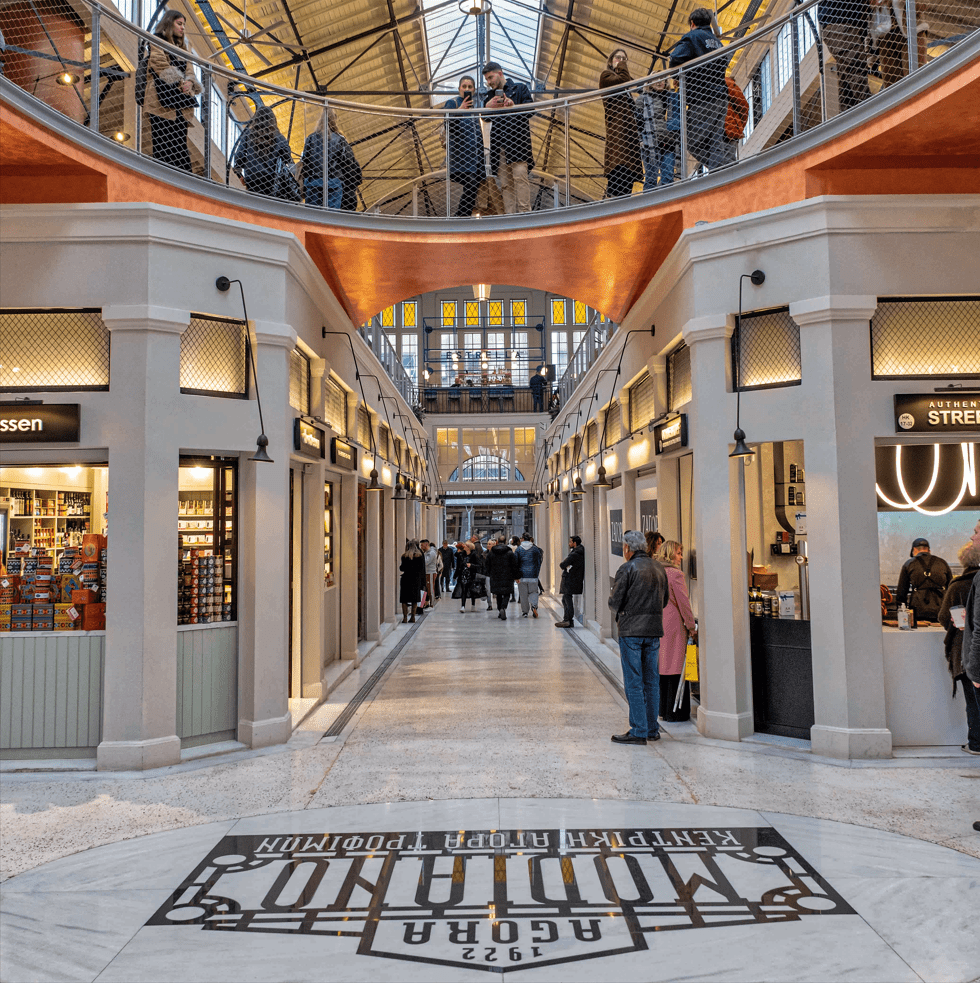A Morning in Modiano: Exploring Thessaloniki's Historic Food Market

In the heart of Thessaloniki, a bustling world of flavors and aromas awaits at the Modiano Market. This historic food market, with its narrow alleyways and bustling stalls, has been a culinary cornerstone of the city for over a century. Join us as we step into this vibrant tapestry of tastes, where the past and present coexist in harmony.
A morning in Modiano Market is more than just a shopping excursion; it's a journey through the history and culture of Thessaloniki. It's a place where tradition and innovation coexist, and where the essence of the city's food culture comes to life. As you leave the market, your senses will be filled with the memories of this unforgettable experience, making it a must-visit destination for anyone exploring Thessaloniki.

The Market's History: A Glimpse into the Past
Modiano Market was established in the early 20th century, a testament to Thessaloniki's rich cultural and culinary heritage. Named after the Jewish merchant and benefactor Eli Modiano, the market has been a melting pot of diverse influences. Over the years, it has evolved to become a symbol of the city's unique food culture.
The history of the Modiano Market, also known as the "Central Food Market of Thessaloniki," is intricately woven into the city's recent past, spanning two centuries of significant chapters. In 1917, after a devastating fire in August, engineer Eli Modiano and architect J. Oliphant initiated the design of the Market. This site was previously occupied by the Talmud Torah Synagogue and was marked for the creation of bazaars according to the Hebrard Plan. The Market's French title in the plans was "Bazar Central Salonique."
By 1925, Eli Modiano constructed an elongated, single-story building with a basement and internal balconies, making it the first traditional food market and one of Thessaloniki's largest indoor markets. Its grand opening in 1930 was celebrated with great pomp, closely entwined with the history of the Jewish Community and Thessaloniki's commercial center. In 1983, the Modiano Market received recognition as a listed building by the Ministry of Environment and Public Works, and in 1995, it was classified as a historic monument by the Ministry of Culture, exemplifying a covered market building. However, after a gradual decline with most of its 144 shops being abandoned, the market closed its doors in 2016. In 2017, it officially passed into the hands of the Fais Group through a contract with the Hellenic State Property Fund.
Fast forward to 2022, after nearly five years of planning, construction, and rebranding, the Modiano Market is poised to reemerge as a next-generation food market concept.
Exploring the Market: Sights and Sounds
As you enter the market, your senses are immediately overwhelmed. Stalls are brimming with fresh fruits and vegetables, aromatic spices, and an array of local delicacies. The vibrant colors and enticing scents create an atmosphere that's truly one-of-a-kind. One of the highlights of a visit to Modiano is the opportunity to meet the passionate vendors. These individuals are not just sellers but storytellers, each with a unique narrative about their products and their connection to Thessaloniki. From olives and cheeses to spices and sweets, their knowledge is a window into the city's history.

Local Flavors: What to Taste
No visit to Modiano Market is complete without indulging in some of its culinary treasures. Try a sample of the famous koulouri, a sesame-crusted bread ring, or savor a selection of olives and feta. For those with a sweet tooth, Loukoumades, Greek donuts drizzled with honey and cinnamon, are a must-try.
Preserving Tradition: The Market's Role Today
While Thessaloniki has modernized over the years, Modiano Market has remained a bastion of tradition. The market continues to thrive, offering a unique blend of old-world charm and contemporary convenience. It's a place where locals and visitors come together to celebrate the city's culinary legacy.

